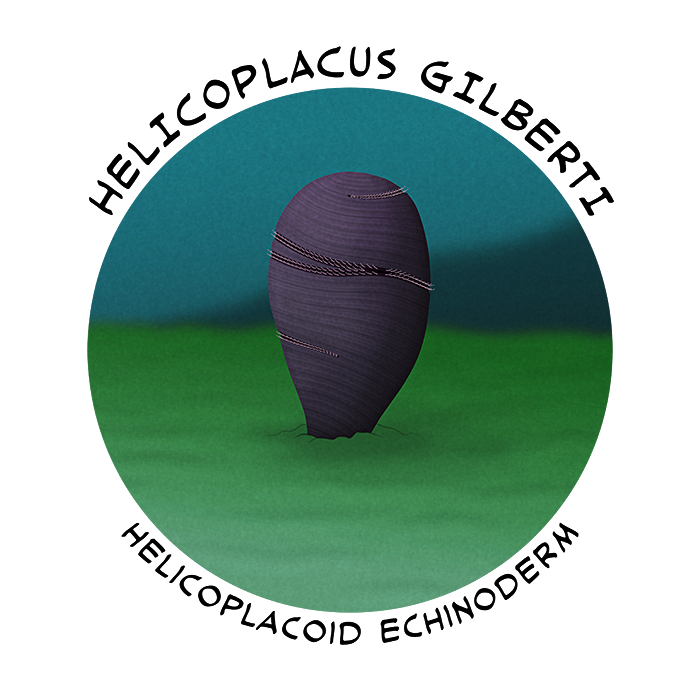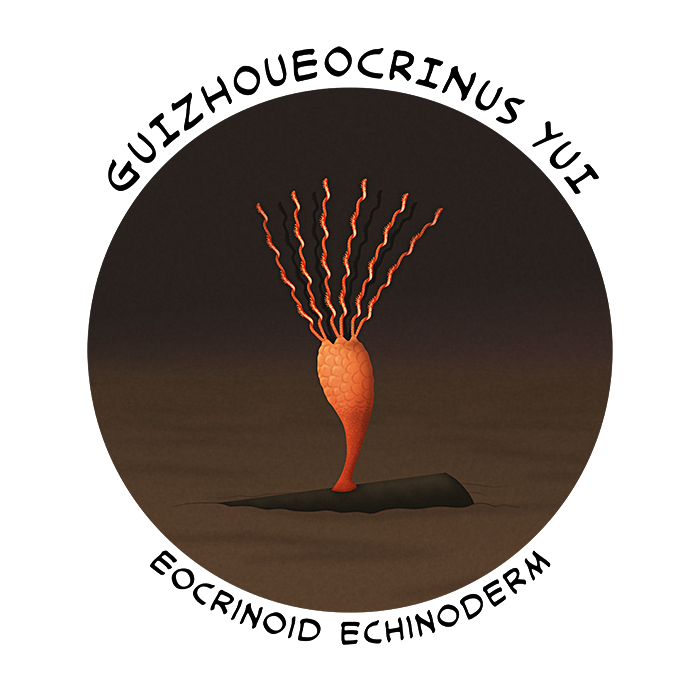While many of the earliest echinoderms had bizarre asymmetrical forms, at some point members of their lineage adopted radial symmetry instead – a development that would eventually lead to the familiar five-way symmetry of most modern species.
And they may have transitioned to that via three-way symmetry.

Helicoplacus gilberti is known from California, USA, and dates to around 525 million years ago. About 7cm tall (2.75″), it had what appears to be three feeding grooves on a body twisted around into a spiralling cigar shape, and it would have lived standing upright with its base buried into soft muddy sediment or microbial mats.
As one of the oldest definite echinoderms in the fossil record, for a long time it was thought to be an extremely “primitive” basal form possibly ancestral to all other groups in the phylum. Its confusing anatomy didn’t help, with debates over the location of its mouth and whether its twisting body was really triradially symmetric or not, but more recent studies have suggested it was actually much closer related to modern echinoderms than to the weird asymmetrical ones.
The discovery of a closely related species named Helicocystis shows a potential transitional form between helicoplacoids and pentaradial echinoderms – a spiral Helicoplacus-like body, but with five feeding grooves, and a small attachment stalk at its base that resembles those of early five-rayed groups like eocrinoids.
This would also mean that all the early echinoderm lineages diverged from their common ancestors even more rapidly than previously thought, developing body plans ranging from bilateral to asymmetric to pentaradial within just a few million years in the early Cambrian.

Eocrinoids were some of the first pentaradial echinoderms to have both attachment stalks and erect feeding appendages, and were the ancestral members of a group called the blastozoans, but it’s not clear if they were actually ancestors or close relatives of modern crinoids. Traditionally crinoids are thought to have evolved from blastozoans, but other studies suggest their similarities might be convergent and crinoids could instead be descended from another group called edrioasteroids.
Guizhoueocrinus yui was an early eocrinoid with a vase-shaped body and a thick stem. Known from southwest China, about 516-513 million years ago, its five arms split into pairs of spirally coiled appendages near their bases, giving it a total of ten.
It grew to around 6cm tall (2.4″), and spent its life filter-feeding while attached to hard surfaces on the sea floor, such as the shells of brachiopods, trilobites, and hyoliths – possibly while some owners of the shells were still alive, and sometimes with multiple individuals found on the same shell.
Another potential link between Helicoplacus and early pentaradial echinoderms also comes from Guizhoueocrinus, with evidence of a “crypto-helical” spiral arrangement of its skeletal plates.
The eocrinoids were the most diverse and successful echinoderms during the Cambrian, and went on to survive until the late Silurian, while other blastozoans descended from them lasted up until the end-Permian mass extinction 250 million years ago. (…Unless crinoids are blastozoans, in which case some descendants of eocrinoids are still alive today.)
